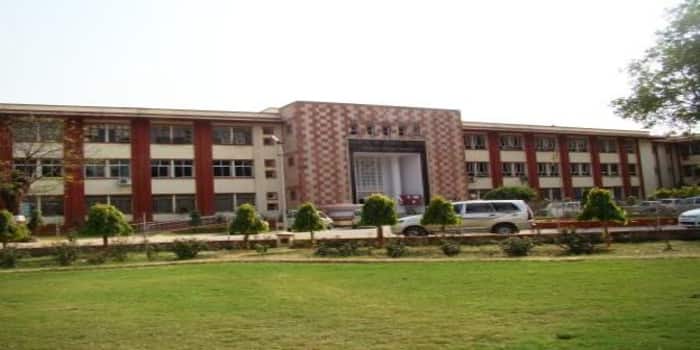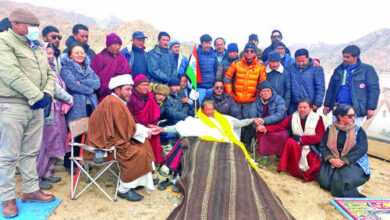AYURVEDIC TREATMENT PROTOCOL FOR COVID-19
Faculty of Ayurveda Institute of Medical Sciences Banaras Hindu University,
COVID-19 DURING PREGNANCY
Introduction
Pregnancy is a physiological state in which biochemical and behavioural changes take place. During pregnancy, pregnant woman should be treated as pot filled with oil1 because of less immunity and changes in her body. There is no difference in Physical and psychological disorders of pregnant woman and other individual because of same doshas and dushyas in both, but treatment modalities are different during pregnancy than other common adults. The course of COVID-19 infection or any other infection in pregnant women is similar that of common individuals. Due to immunocompromised status and adaptive changes during pregnancy, pregnant women are more susceptible to major symptoms ( cough, hyperthermia, pneumonia, other respiratory infections, headache, muscular pain , malaise etc.) of COVID-19 than general population. In some cases, acute respiratory infection and hyperthermia can lead to birth complication i.e preterm labour, premature rupture of membranes, abnormal heart pattern in both mother and foetus2 . Pregnant women with heart disease, hypertension, diabetes, severe asthma, severe anaemia, excessive uterine distension due to multiple gestation and severe polyhydramnios3, are at higher risk for COVID-19. Pregnant women who are hospitalized, additional foeto-maternal issues should be monitored ,i.e. fetal monitoring, monitoring for preterm labour, maternal oxygen level and
monitoring of venous thrombo-embolism and its prophylaxis4,5.The potential risk of vertical transmission is unclear6.
Management of COVID-19:
Moderate and severe symptomatic pregnant women need emergency treatment. Hence, an ayurvedic management should be done only in those women who are stable or negative for SARS
-COV-2 test after taken emergency treatment. The management and fetal safety are major concern. Thus, integrated approach supports the pregnant woman during her prenatal period.
A detailed description of ahara and vihara of garbhini is mentioned under the Garbhini Paricharya in the Ayurvedic classics involving the do’s and dont’s for a pregnant lady. All these have to be strictly emphasised by a pregnant woman with COVID-19.
Preventive measures for all healthy, asymptomatic and mild symptomatic pregnant women:
Life Style modification ( DO’s- Pathya Vihar )
Pregnant woman should be cheerful and divout with positive thinking.
Avoid those people who are sick or who have been exposed to the corona virus and avoid touching of eyes,nose and mouth.
Use of clean disposable mask/ cloth mask or layered cloth to cover the mouth and nose. After using wash the cloth mask or layered cloth daily and dipped it into boiled water of haridra (haldi), neem leaves and then dry it.
Maintaining of social distance (at least 6 feet) and clean, disinfect frequently touched surfaces.
Personal hygiene ( Shuchyalankrita)7,8:
Proper cleaning of hands with neem soap, paste of aloe vera (ghrita kumari) gel, haridra (haldi), nimb (neem) leaves and wash with running water.
Daily bath with cooled or slightly warm decoction of haldi, neem and rose petals. She should wear clean, loose, light coloured cotton clothes.
Dental hygiene should be maintained with herbal tooth paste or cleaning with rock salt and mustard oil .Oral / Throat hygiene should be maintained with gargles of hot saline decoctions of tulsi/ neem/ guduchi (giloy)/ pippali/ khadira.
Good posture during sitting and standing position and she should take sound sleep at least 8 hours at night and 2 hours rest at day time on soft, regular and comfortable mattress.
Reading of holy books, literatures of great people ,worship and listening of soft music.
Timely bowel and urinal habits.
Residence of pregnant woman should be ventilated and fumigated (dhoopan karma) with yava (Jau- Hordeum vulgare), Guggulu (Commiphora mukul), Sarshap beeja ( Brassica campestris), Ajwain ( Hyoscyamus niger), Haldi ( Curcuma longa), Neem leaves, Saral ( cheer- Pinus roxburghii) and Ghrita .
Aerobic Excercises and Deep Breathing*
** If any pain in chest or breathlessness is felt during deep breathing, consult to doctor immediately.
Isolation9
Pregnant patient with an epidemiologic history of contact with a person with confirmed, probable, or suspected COVID-19 should be self- isolated upto incubation period of 14 days for monitoring of symptoms and testing should be performed. If pregnant patient is found positive for SARS COV-2 and remain asymptomatic, she can continue isolation for7 days after the date of their Ist positive SARS COV-2 test. Further evaluation and management of patient who become symptomatic depend on illness severity and her clinical status.
Don’ts ( Apathya Vihara)10,
Visit in crowded places and friends, family gathering and travelling on jerky, speeding vehicles and broken, rough roads should be avoided.
Violent, extreme activities and high heeled shoes.
Sleeping in day, awakening in night and suppression of natural urges.
Smoking, use of alcohol, sedatives and self medication.
Coitus should be avoided strictly in cases of recurrent pregnancy loss/ abortions, previous preterm deliveries, low lying placenta and in any vaginal infection.
Do’s and Don’t for working pregnant women:
Follow all the above preventive measures.
Prefer work from home ,take intermittent rest during working hours and change of posture or walk for 5-10 minutes after every 2 hours and avoid stress full and excessive work .
Take heavy breakfast daily before leaving the home and lunch box should be packed . Dietary regimen (Ahara) for all healthy pregnant women, asymptomatic and mild symptomatic pregnant women with COVID-19 infection:
According to satmya and agni (digestive power) of garbhini, the diet should be frequent liquid, semisolid, sweet, congenial, nutritious and pleasant to heart and mind..A wholesome diet leads to pratiraksha abhivrriddhi (immunity booster), stanya nirmana (formation of breast milk), Garbh vikas (development of fetus) and garbhini poshan (nourishment to pregnant woman). Requirements of calories for pregnant woman:A pregnant woman of normal weight should consume an additional 300 kcal/day .Total calorie intake vary based on BMI, but the average recommendation is 2500 kcal/day.
Pathya Ahara ( Wholesome dietary regimen)
Choice of meal in early morning (6-7 AM), mid morning (8-9 AM), evening (3-4 PM) and late evening (5-6 PM):
Herbal tea with mint (pudina), Adrak (ginger) / Coconut water, Shikanji, fresh fruit juice. Mudag yush (mung beans soup) or vegetable soup with 1tsf of butter.
Cow’s milk and milk products i.e. pudding (sweet kheer) of rice or ragi/ halwa of wheat flour or suji /daliya of crushed wheat & Parched paddy (laja) with ghee, laja mand ( Parched paddy’s starch)
Seasonal Fruits and Dry fruits (soaked) in numbers , i.e. Almond (2-3 ), walnut (1 ), fig (3- 4), Black raisins (3-4) , Dates or Chhuhara (2).
Regular lunch(12 noon-1 PM) and dinner (8-9 PM), Quantity in each :
Mung khichadi (1 katori, 60-70 gm) / Rice (1 katori, 60-70 gm) / Roti or chapati (2 in nos.), Dal (1 katori 30-40 gm), green vegetables ( ½ or ¾ cup, 100-150 gm, Butter milk (½ or ¾ cup, 100-150 ml), coriander chutney ( 1tsf,5gm), Fresh Salad ( 9-10 slices) of carrot, tomato, cucumber and lemon (1/2 or 1) etc. In 5th to 9th months- Preference should be given to protein and minerals rich diet i.e. soya- milk/ paneer/ cheese /tofu/ rajma/ black gram and eggs, meat (in non-vegetarian pregnant woman)
Bed time ( 2 hours before sleep)
Milk (1 cup, 200ml) with 5 gm jaggery.
Note- Pregnant women who are suffering from diabetes, should avoid sweet food articles. Apathya Ahara11 ( Harmful effects on mother and foetus):
Fasting ( upvaas) for a long time and excessive and frequent eating.
Excessive tea, coffee and cold drinks.
Excessive sweet, spicy, oily, sour, salty, bitter, pungent and stale, heavy, vishtambhi ( hard to digest), fermented , fast or junk foods .
Clay, garlic, surana ( jimikand), and excessive use of onion, radish, papaya etc. and excessive meat or meat soup.
Aushadh (Safe and easily available ayurvedic drugs) for all healthy pregnant women, asymptomatic and mild symptomatic pregnant women with COVID-19 infection:
Aushadhis (Ayurvedic drugs) should have immunoboosting, kaphvata-shamak, kaphanissarak (mucolytic), deepan –pachan (appetizing and carminatives) , mutral (diuretic), Branhan (anabolic), krimighn or jantughn (antiviral, antiseptic, antimicrobial), shothhar (anti-inflammatory), vedna har (analgesic), jwaraghn (antipyretic) properties.
Hence, so many drugs may be helpful to increase the immunity, maintenance of pregnancy and relief in mild symptoms of COVID-19 and also. These drugs should be used only after consultation of an ayurvedic physician.
Gargles with lukewarm decoction of neem patra (Azadirachta indica), haridra (Curcuma longa) Tulsi (Ocimum Sanctum) and saindhav lavan (rock salt).
Lavangadi vati 250 mg to be chewed 6 hrly .
Sitopladi churna 3gm with honey in morning and evening
Decoction of Guduchi (Tinospora cordifolia) and jaggery 10-20 ml twice in a day.
Nimba kalka with jaggery/sugar , 5 gm twice in a day.
Patol (parval rich in nutrients and best drug for fever) patra swaras 10 ml twice in a day
Madhuyashti* churna 3gm twice in a day ,mixed with honey and sugar
Madhuyashti should not be used in those pregnant women who have gestational hypertension, oedema .
Shatavari 12,13(Asparagus racemosus) From 1st to 9th months
Shatavari powder, 3-6 gm / Shatavari rasayan 10 gm with milk/ goghrita, twice in a day.
Punarnava14, (Boerhavia diffusa) From 4th to 9th months
Punarnava mandur 250 mg , twice in a day
Punarnava kwath (decoction) 20-40 ml twice in a day (preferably in oedema, spasmodic pain in abdomen ) .
Amalki or Dhatri (Aanvla)15 (Embelia ribes) From 4th to 9th months
Amalki powder (3-6 gm) with sugar and water /Murabba of Amalki (1 piece,) in a day.
Dhatri lauh 250 mg twice in a day.
Draksha (munakka)16 ( Vitis vinifera) From1st to 9th months
Draksha avleh 10 gm/ Draksha ghrita 10 ml twice in a day.
Guduchi (giloy)17,18( Tinospora cordifolia) in 1st to 9th months
Guduchi ( Giloy, Tinospora cordifolia) swaras/ Medicated milk with guduchi or Guduchi rasayan 10 gm 10 ml twice in a day.
Guduchi ghan vati / satva 250 mg twice in a day.
Gokhshur19 ( Tribulus terrestris) preferably in 6th month & 7th to 9th months as per requirement-
Gokhshur powder 3gm twice in a day / Gokshur rasayan 5-10 gm twice in a day..
Preparations of Sudha varga:
Praval pishti 125-250 mg twice in a day / Godanti bhasma 125-250 mg twice in a day /
Mukta pishti/ muktashukti pishti 125-250 mg twice in a day.
Yogasanas :
Yogasanas should be done for proper oxygen supply, relieving mental and physical strain. These should be done from 1st month to 9th months, preferably in morning on empty stomach.
Lower limb relaxation- Padanguli naman, Gulph naman and Gulph chakra
Upper limb relaxation- Mushtika bandhan, Mani bandh naman, Skandha chakra .
Bhramari and Nadi shodhan pranayam
Vajrasana, Shavasana and Meditation
Mantra Chanting:
Chanting for 3-5 minutes according to their rituals.
References:
Charak Samhita, Pt. Rajeshwar Dutt Shashtri, , editor., Chaukhamba prakashan, Varanasi; 2011;Sh. sthan 8/22
Della Gatta AN, Rizzo R, Pilu G, Simonazzi G,author,. COVID19 during pregnancy: a systematic review of reported cases. 2020.
Qiancheng X, Jian S, Lingling P, et al. Coronavirus disease 2019 in pregnancy. Int J Infect Dis ,2020.
American Society of Hematology. COVID-19 and VTE/Anticoagulation: https://www.hematology.org/covid-19/covid-19-and-vte-anticoagulation, April 24, 2020.
Society of Critical Care Medicine. COVID-19 Guidelines
Wu Z, McGoogan JM. Characteristics of and Important Lessons From the Coronavirus Disease 2019 (COVID-19) Outbreakin China: From the Chinese Center for Disease Control and Prevention. JAMA 2020.
Kashyap Samhita, P.V.Tiwari, editor. Chaukhamba prakashan,Varanasi;2008; chi.sthan 2/14, Sh.sthan 5/13-14,
Charak Samhita, Pt. Rajeshwar Dutt Shashtri,editor , Chaukhamba prakashan, Varanasi; reprinted 2011;Su.sthan 25/40,
Qiancheng X, Jian S, Lingling P, et al,author.Coronavirus disease in pregnancy.Int J Infect Dis .2020.
Sushruta Samhita, Ambika dutta shastri, editor, Chaukhamba prakashan, Varanasi; Vol I and II, 2011;Sh. sthan 3/16,
Sushruta Samhita, Ambika dutta shastri, editor, Chaukhamba prakashan, Varanasi; Vol I and II, 2011; Sh. sthan 10/3
Kalikar MV, Thawani VR et all. Pharmacol.2008; 40:107-10
Govindadasa, Bhaishajya ratnavali, Ambika data shastri, Editor. Chaukhamba prakashan, Varanasi; 2011;3/156.
E- Journal of Chemical and Pharmaceutical Research CODEN(USA): JCPRC5 .2010; 2(5):339-347.
E-Journal of Chemical and Pharmaceutical Research,CODEN(USA) : JCPRC5 1229 Embelia ribes: 2016; 8(4):1229-1233
Anter J, de Abreu-Abreu N, Fernández-Bedmar Z, Villatoro-Pulido M, Alonso-Moraga A, Muñoz-Serrano A.,editor. Targets of red grapes: oxidative damage of DNA and leukaemia cells. Nat Prod Commun. 2011; 6(1):59:64
Santos FA, Rao VS. A study of the antipyretic effect of quinine, an alkaloid effective against cerebral malaria, on fever induced by bacterial endotoxin and yeast in rats. J Pharm Pharmacol. 1998;50:225
.. Dikshit V, Damre AS, Kulkarni KR, Gokhale A, Saraf MN,author. Preliminery screening of immunocin for immunomodulatory activity. Indian Journal of Pharmacy. 2000:309:10
Saurab Chhatre, Dr. Tanuja Nesari , author,Pharmacogn Rev. Jan-Jun; 2014 , 8(15):45- 51.doi:10.4103/0973-7847.125530, PMCID:PMC3931200, PMID:24600195,.
ANNEXURE III





